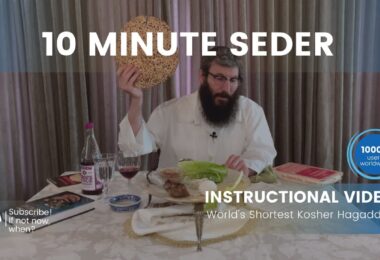For David Saranga, Twitter and Facebook remain the best weapons in an ongoing battle to maintain a positive image of Israel and make the Jewish State easily accessible and approachable to everyone.


- David Saranga preparing for the conference. Photo courtesy of the 2010 Herzilya Conference.
Saranga, the former consul for Media and Public Affairs at the Consulate General of Israel in New York, brought this mission to full speed just over a year ago, when he held live Twitter debates on behalf of the Israeli government during the Gaza war, opened Israel’s YouTube channel and revamped Isrealli.org, the State of Israel’s official blog. His latest task, now serving as a faculty member of the Asper Institute at IDC-Herzliya’s Sammy Ofer School of Communications, is to launch this year’s 10th Annual Herzilya Conference on social networks for the first time and reach out to a broader, ideally younger audience.
“If we want to approach young people as well we have to bring it to the language that they use,” Saranga said.
In the past decade, the Herzliya Conference has become an increasingly vital stage for Israel’s leaders to gather and discuss government policies and national security issues.  This year’s conference begins tomorrow (Jan. 31) and ends on Feb. 3, hosting a wide range of leaders such as Prime Minister Benjamin Netanyahu, former Foreign Minister and MK Tzipi Livni, Deputy Foreign Minister and MK Daniel Ayalon and World Jewish Congress President Ronald S. Lauder. One of the newest speakers to confirm attendance is Dr. Salam Fayyad, prime minister of the Palestinian Authority, who will join Tuesday evening’s panel: “Prospects of Peace: The Israeli-Palestinian Track.”
In addition to streaming the various panels in real-time throughout the week, Saranga and his team will also be editing and uploading shorter, more user-friendly versions of each panel, which will remain available online after the fact. Conference enthusiasts can meanwhile receive play-by-play updates about the various speakers, panels and issues addressed via Twitter and Facebook.


- Herzilya 2010. Photo courtesy of the 2010 Herzilya Conference.
“People can see the essence of the conference,” added Saranga, who said he’ll be working with a team of 10 people, predominantly students, to accomplish this mission. He has also been working closely with Dr. Noam Lemelstrich-Latar, director of the Asper Institute and dean of the Sammy Ofer School of Communications.
Saranga’s hope is that viewers and readers all over the world will repost and “ReTweet” conference updates to their friends, giving Israel a bigger voice all over the world, and a continued chance to make a positive impact.
“One of the goals of the project is to enlist organizations and private bodies in Israel and abroad, for whom Israel is both relevant and important,” Saranga said. “This is one of the first projects ever undertaken, whose purpose is to enhance the message emerging from the Herzliya Conference, by allowing organizers to tap into the potential of the social network.”
_ _
For live updates, follow @HerzliyaConf and @DavidSaranga on Twitter, or become a fan of the Herzilya Conference on Facebook. To see the preliminary PDF version of the conference program, click here to download. Further details about the new media launch are available here.
Sharon Udasin is a staff writer at The Jewish Week. E-mail her at [email protected], or follow her on Twitter.
- @HerzilyaConf goes live on social networks - 11/30/2010
- My first “intercourse†with socialized healthcare - 10/7/2010
- Uniting Jewish Art: SUDINmagazine - 9/20/2010





